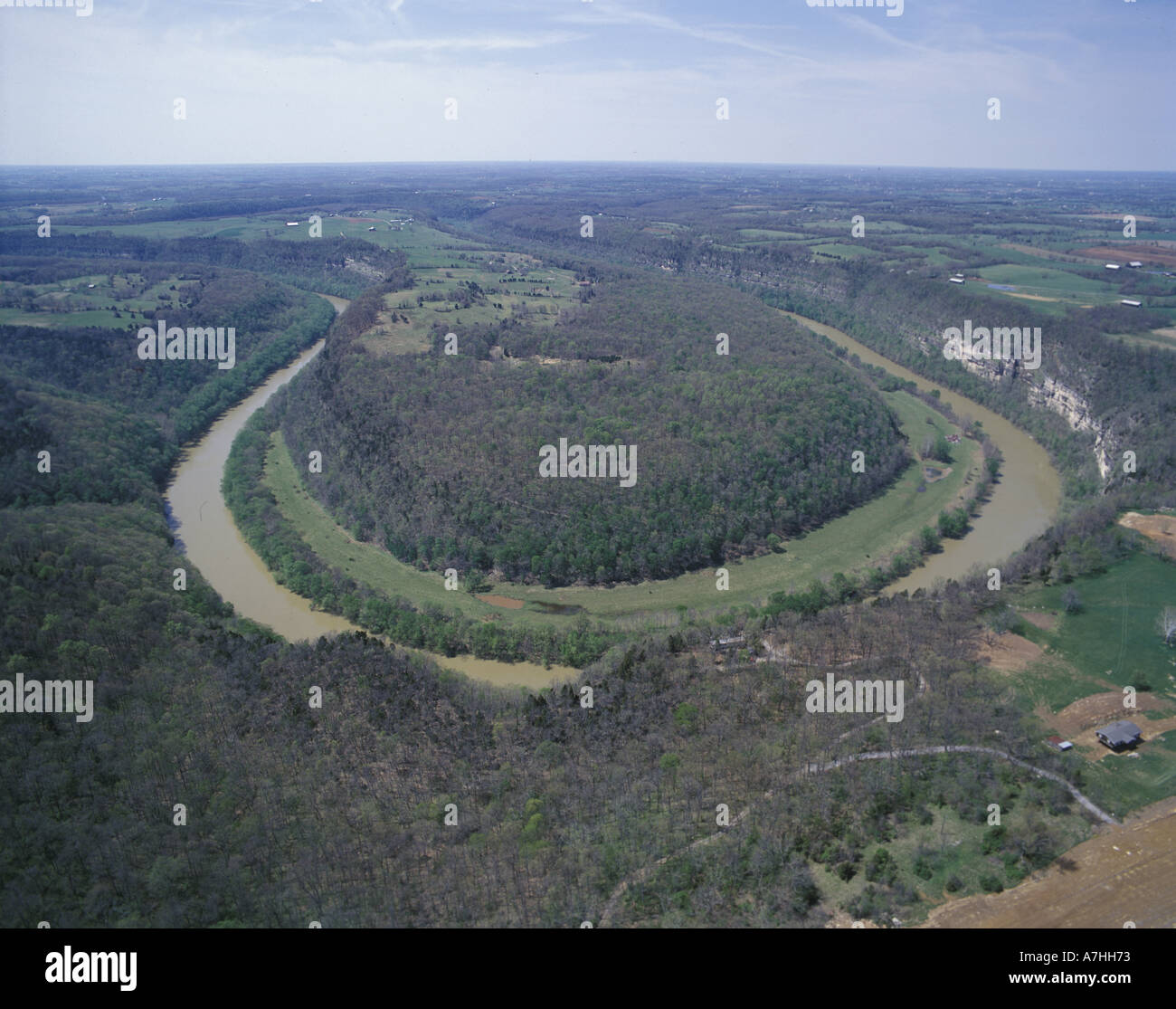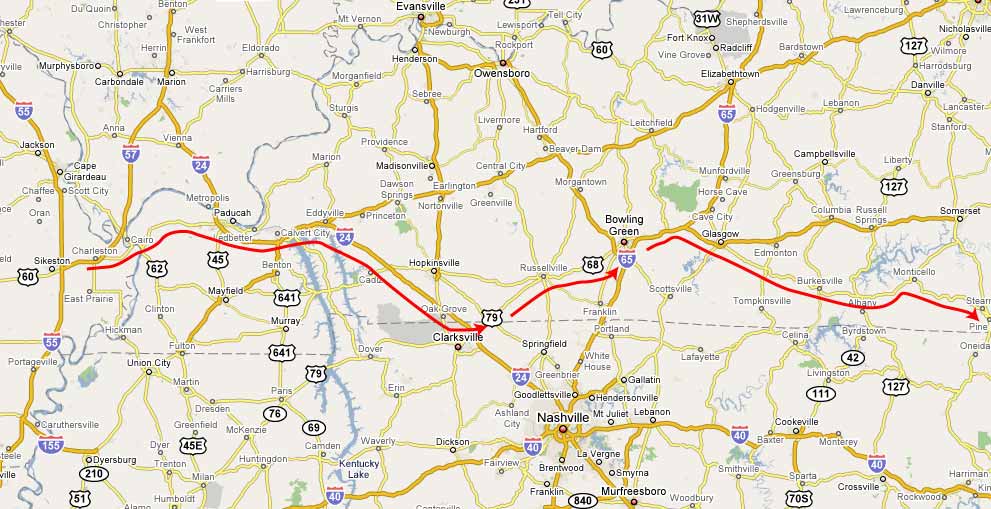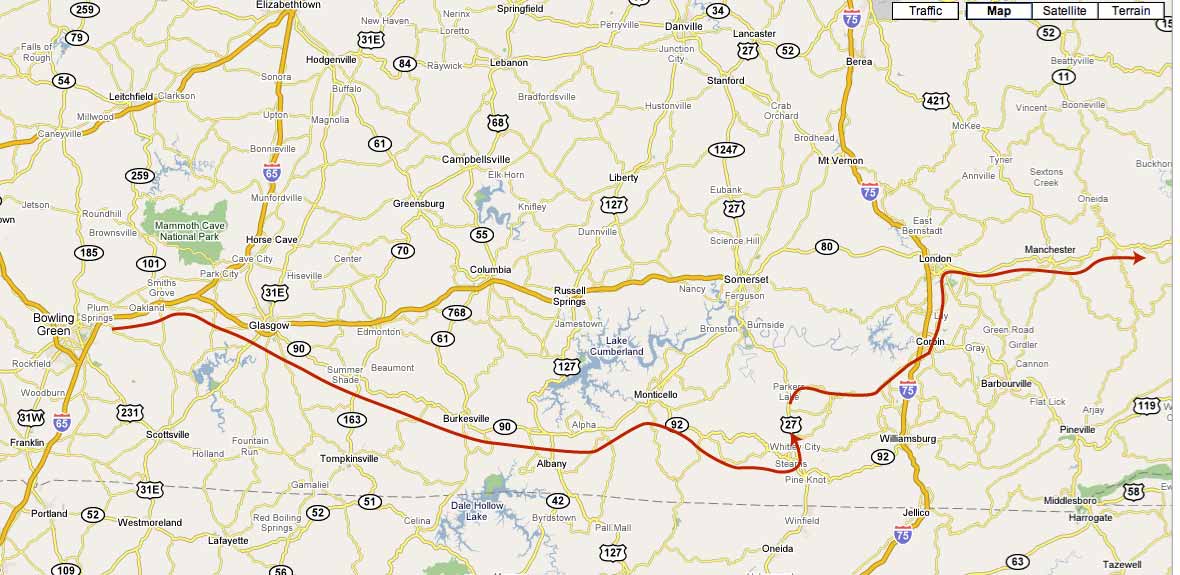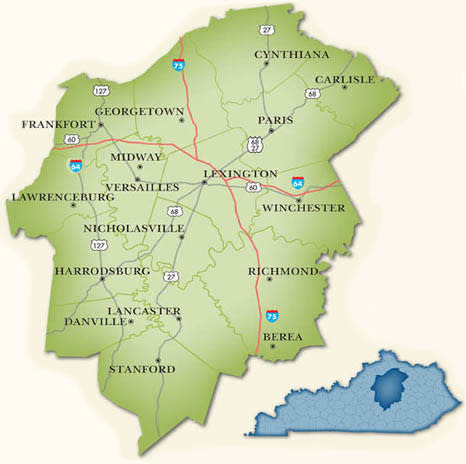Navigating the Bluegrass: A Complete Exploration of the Kentucky River System
Associated Articles: Navigating the Bluegrass: A Complete Exploration of the Kentucky River System
Introduction
With nice pleasure, we are going to discover the intriguing matter associated to Navigating the Bluegrass: A Complete Exploration of the Kentucky River System. Let’s weave fascinating data and supply recent views to the readers.
Desk of Content material
Navigating the Bluegrass: A Complete Exploration of the Kentucky River System

The Kentucky River, a significant artery of the Bluegrass State, is greater than only a scenic waterway. Its winding course, a tapestry woven by karst topography and sculpted by millennia of abrasion, has profoundly formed Kentucky’s historical past, economic system, and tradition. Understanding its geography requires greater than a cursory look at a map; it calls for a deep dive into its intricate community of forks, tributaries, and the distinctive geological options that outline it. This text will function a complete exploration of the Kentucky River system, inspecting its geographical options, historic significance, ecological significance, and ongoing challenges.
A River Divided: The Forks and Tributaries
The Kentucky River, in contrast to many rivers that circulation in a comparatively straight line, is characterised by its extremely dissected and dendritic drainage sample. It would not merely circulation from a single supply; as a substitute, it is born from the confluence of three main forks: the North, Center, and South Forks. These forks, themselves fed by quite a few smaller streams and creeks, converge to create the principle stem of the Kentucky River, which in the end flows into the Ohio River close to Carrollton.
-
The North Fork: Rising within the Appalachian Mountains of jap Kentucky, the North Fork is the longest of the three, characterised by a steeper gradient and sooner currents. It cuts by rugged terrain, carving deep valleys and gorges. Its watershed encompasses a good portion of jap Kentucky, together with areas recognized for his or her coal mining historical past. A number of smaller tributaries feed into the North Fork, contributing to its substantial quantity. Mapping this part requires cautious consideration to the quite a few bends and meanders that outline its course.
-
The Center Fork: Originating within the central a part of the state, the Center Fork is mostly much less steep than the North Fork, with a extra average circulation. It drains a largely agricultural panorama, and its watershed consists of parts of the Bluegrass area, well-known for its fertile soil and horse farms. The Center Fork’s comparatively gentler gradient has contributed to the event of cities and settlements alongside its banks. The map of this part reveals a extra meandering sample in comparison with the North Fork’s comparatively straighter course in locations.
-
The South Fork: The South Fork, rising within the Cumberland Plateau area, shares traits with the North Fork, exhibiting a considerably steeper gradient and sooner currents. Nonetheless, its watershed is smaller than that of the North Fork. This fork contributes considerably to the general quantity of the Kentucky River, and its course is marked by a number of spectacular gorges and waterfalls, making it a well-liked vacation spot for outside fanatics. The mapping of this space highlights the ruggedness of the Cumberland Plateau and the affect of geological formations on the river’s path.
Past the three foremost forks, quite a few smaller tributaries be part of the Kentucky River system, including to its complexity. These tributaries, ranging in dimension from small creeks to sizable streams, play a vital function in sustaining the river’s circulation and ecological variety. An in depth map of the Kentucky River system should embrace these tributaries to offer an entire image of the watershed.
Geological Influences: Karst Topography and Caves
The Kentucky River’s distinctive character is inextricably linked to the underlying geology. A lot of its course lies inside a karst area, characterised by soluble bedrock, primarily limestone and dolomite. This soluble rock has been eroded over millennia, making a panorama punctuated by caves, sinkholes, underground streams, and is derived. These geological options considerably affect the river’s circulation, creating sections the place the river disappears underground, solely to reappear downstream. This subterranean drainage system is a defining attribute of the Kentucky River and necessitates a map that signifies the areas of those vital geological options, together with the Mammoth Cave system, one of many world’s longest recognized cave programs, which lies throughout the Kentucky River watershed.
Historic Significance: Transportation and Settlement
The Kentucky River has performed a pivotal function in shaping Kentucky’s historical past. Earlier than the arrival of railroads and highways, it served as a vital transportation artery, facilitating the motion of products and folks. Steamboats navigated its waters, connecting communities and fostering commerce. Many cities and cities alongside the river owe their existence and progress to their proximity to this very important waterway. Historic maps of the Kentucky River reveal the areas of essential settlements, ports, and navigation factors, highlighting the river’s function within the state’s growth. The maps additionally present the areas of great historic occasions, equivalent to battles and settlements, that have been instantly influenced by the river’s geography.
Ecological Significance: Biodiversity and Conservation
The Kentucky River system helps a wealthy biodiversity, encompassing a big selection of aquatic and terrestrial species. Its waters are house to varied fish species, together with a number of endangered or threatened populations. The encompassing riparian zones present habitat for a wide range of birds, mammals, and different wildlife. Nonetheless, the river system faces quite a few ecological challenges, together with air pollution from agricultural runoff, industrial discharge, and mining actions. Understanding the ecological significance of the Kentucky River necessitates a map that identifies key habitats, delicate areas, and areas impacted by air pollution. This data is essential for conservation efforts aimed toward defending the river’s biodiversity.
Challenges and Conservation Efforts:
The Kentucky River faces quite a few challenges within the twenty first century. Water high quality stays a big concern, with air pollution from numerous sources impacting the well being of the river ecosystem. Sedimentation from erosion additionally poses a menace, altering the river’s morphology and habitat. Moreover, invasive species threaten the native natural world. Addressing these challenges requires a multi-faceted strategy, involving stricter environmental laws, improved land administration practices, and public consciousness campaigns. A map highlighting areas of air pollution, erosion, and invasive species presence is essential for efficient conservation planning. This map, coupled with information on water high quality, sediment load, and species distribution, can inform focused interventions and monitoring efforts.
Conclusion:
The Kentucky River is way over only a line on a map; it’s a dynamic and complicated system that has formed the panorama, historical past, and tradition of Kentucky. Understanding its intricacies requires a holistic strategy, integrating geographical information, historic data, and ecological insights. By using detailed maps and incorporating information from numerous sources, we are able to acquire a deeper appreciation for the Kentucky River system, its significance, and the continuing efforts to guard this very important useful resource for future generations. A complete map, subsequently, just isn’t merely a visible illustration however a vital software for understanding, managing, and conserving this invaluable asset of the Bluegrass State. Future mapping initiatives ought to incorporate superior applied sciences equivalent to GIS (Geographic Info Programs) to permit for dynamic updates and detailed evaluation, furthering our understanding and safety of this exceptional river system.








Closure
Thus, we hope this text has offered worthwhile insights into Navigating the Bluegrass: A Complete Exploration of the Kentucky River System. We recognize your consideration to our article. See you in our subsequent article!